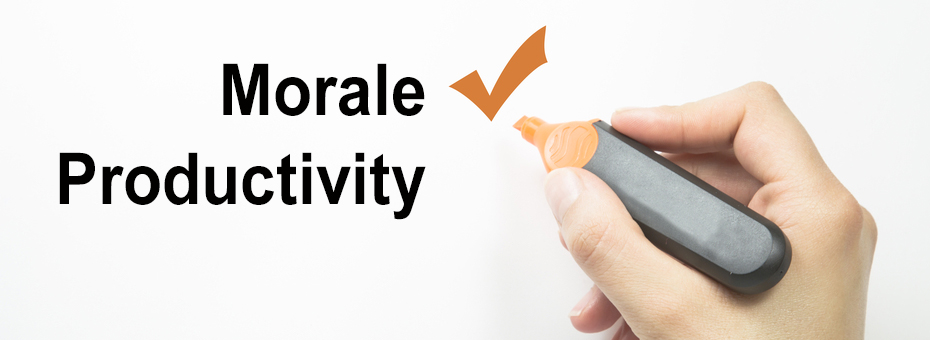Boost productivity but reduce morale. Boost morale but reduce productivity. Is there a way out of this vicious circle of undesirable tradeoffs?
Lean, fortunately, offers a better, more people-centric path. When we improve the work with employees (rather than at their expense), both morale and productivity can actually improve at the same time.
I witnessed this in a coaching engagement I did recently with my employer’s Costing team – the team that accounts for all of our administrative expenses: salaries, rent, travel, training, consulting, marketing, etc. These items are our main source of operational costs, so the team plays an important role in managing our bottom-line in a financially responsible way.
When I started working with them, the team of six had been recently merged together from two separate teams. Four people supported IT budgeting (and previously reported to IT), while the other two supported the budgeting activities for the rest of the entire corporation. Two-thirds of the team’s staff were handling one-third of the team’s overall portfolio of work. The challenge was to right-size staffing to be proportionate with the corporation’s needs, without compromising the level of service IT was used to getting.
The team knew they needed to create “one team” but were not exactly clear on how to get there. The team’s manager started by encouraging the team – at the gemba – to identify duplicate tasks and find opportunities to take advantage of existing automation. Soon everyone was eagerly sharing their findings and ideas at team meetings, where I further challenged them to focus on customer value. What was it that their customers – EDC’s executives – really needed and what was it that they could do without? Turns out no one was really looking at that third tab in the spreadsheet being produced every month. By asking their customers about value, the team was able to discover all sorts of ways to provide the same level of service with less effort.
Another opportunity they identified was the fragmentation of tasks: one person would download data, another would analyze it, another would update the journal entries, and yet another would present a report to the customer. Everyone on the team was fully capable of doing both the administrative and the more knowledge-intensive tasks, so they created continuous value streams based on the customer, not the task. Team members now handle the budgeting, reporting and consultation process for different executives from beginning to end, and the stagnation of work that the handoffs were creating has disappeared.
Thirdly, the team participated in a workshop given by Tracey and Ernie Richardson, where they discovered the power of “DNA” – discipline and accountability – that comes from implementing standards in the workplace. All of a sudden, the Costing team was not quite as forgiving of teams submitting their budget numbers late. Travelling? Please name a backup. Left it to the last minute? How can we help you adhere better to the standard next time?
After only a few months, the team managed to remove 1394 hours (per year) of non-value-adding work from their processes – enough to redeploy one full person to handling the non-IT work.
But the biggest gain was not in productivity, but in morale. The team now feels inspired to find problems and improve their processes. People previously doing clerical work are now holding their chins slightly higher on the days when they are going to present their reports to their executive clients.
And the team is not showing any signs of slowing down. They’ve enthusiastically created kanban boards to visually track the flow – and see the problems – in their month-end and corporate forecasting processes, two major deliverables that occupy a lot of their time.
Does productivity have to be a tradeoff with morale? Only if you don’t believe in your people.





